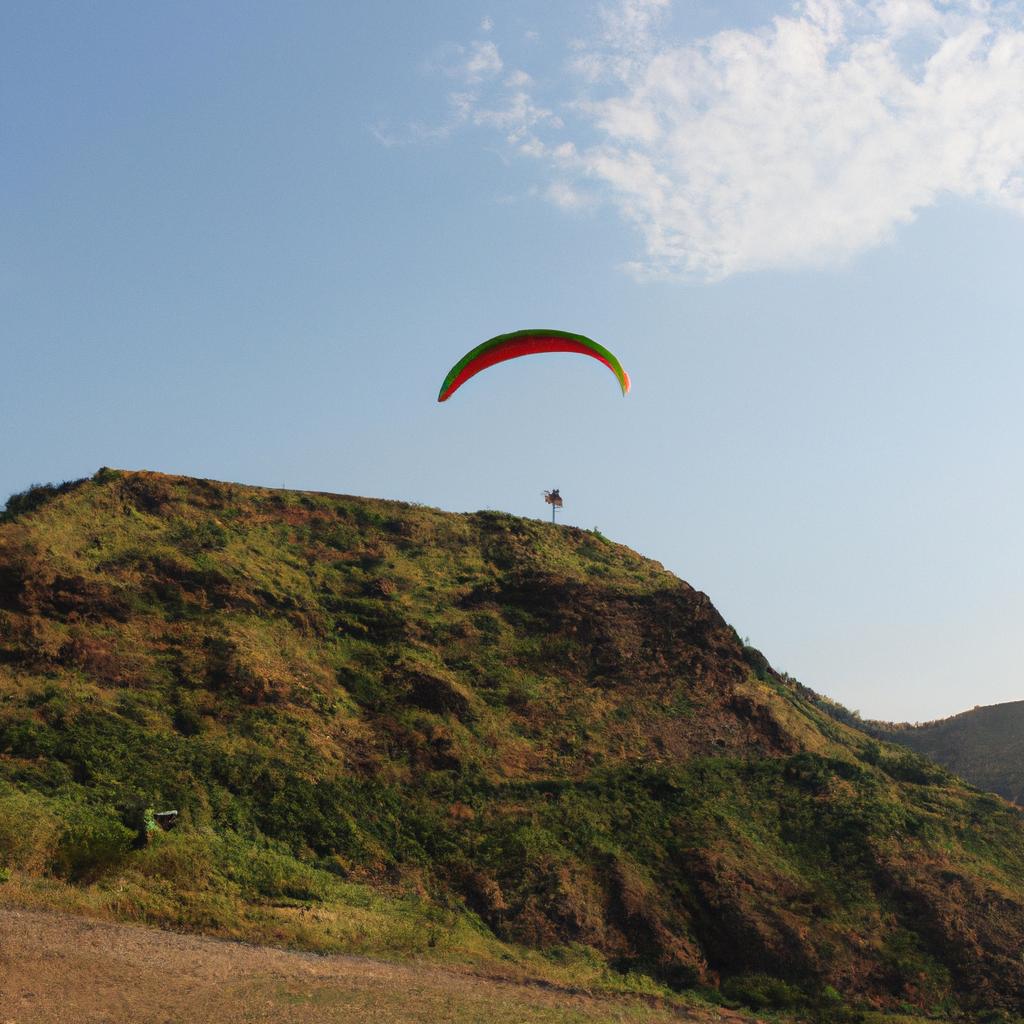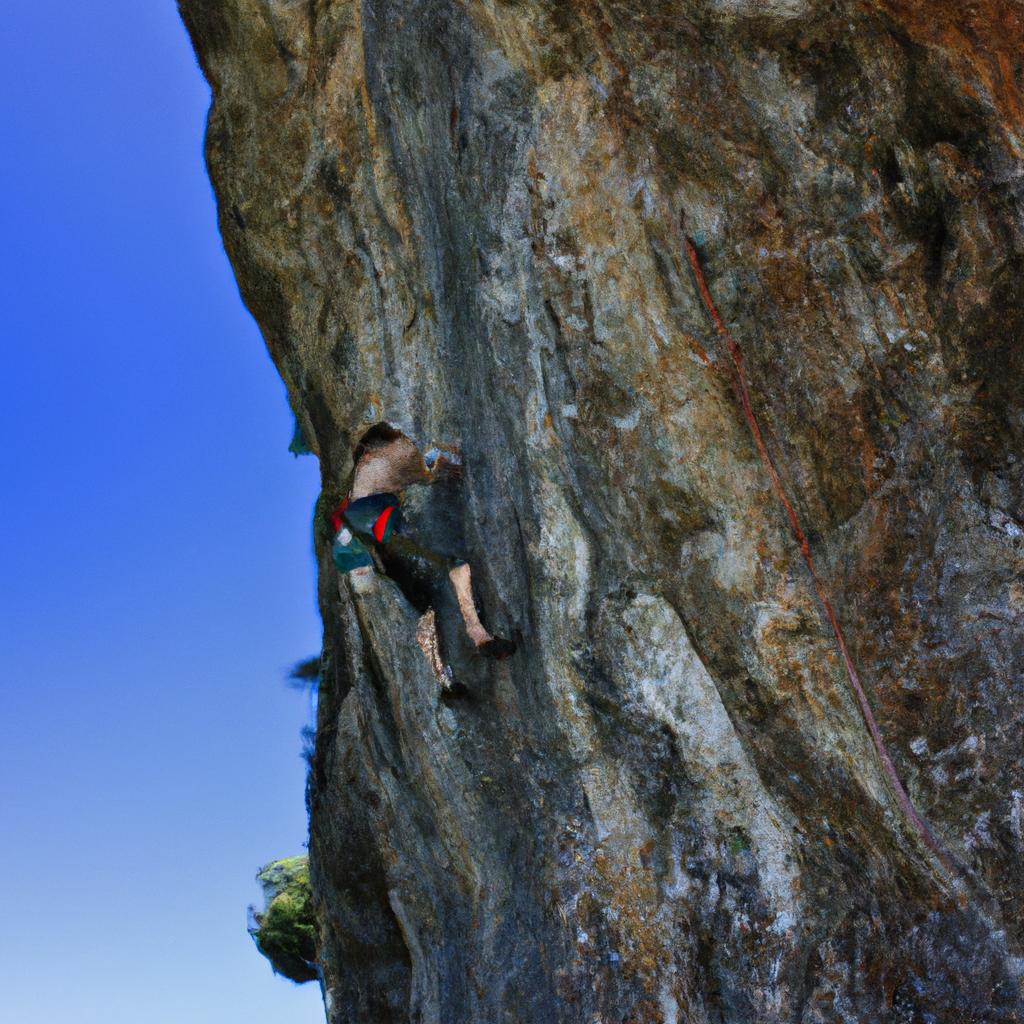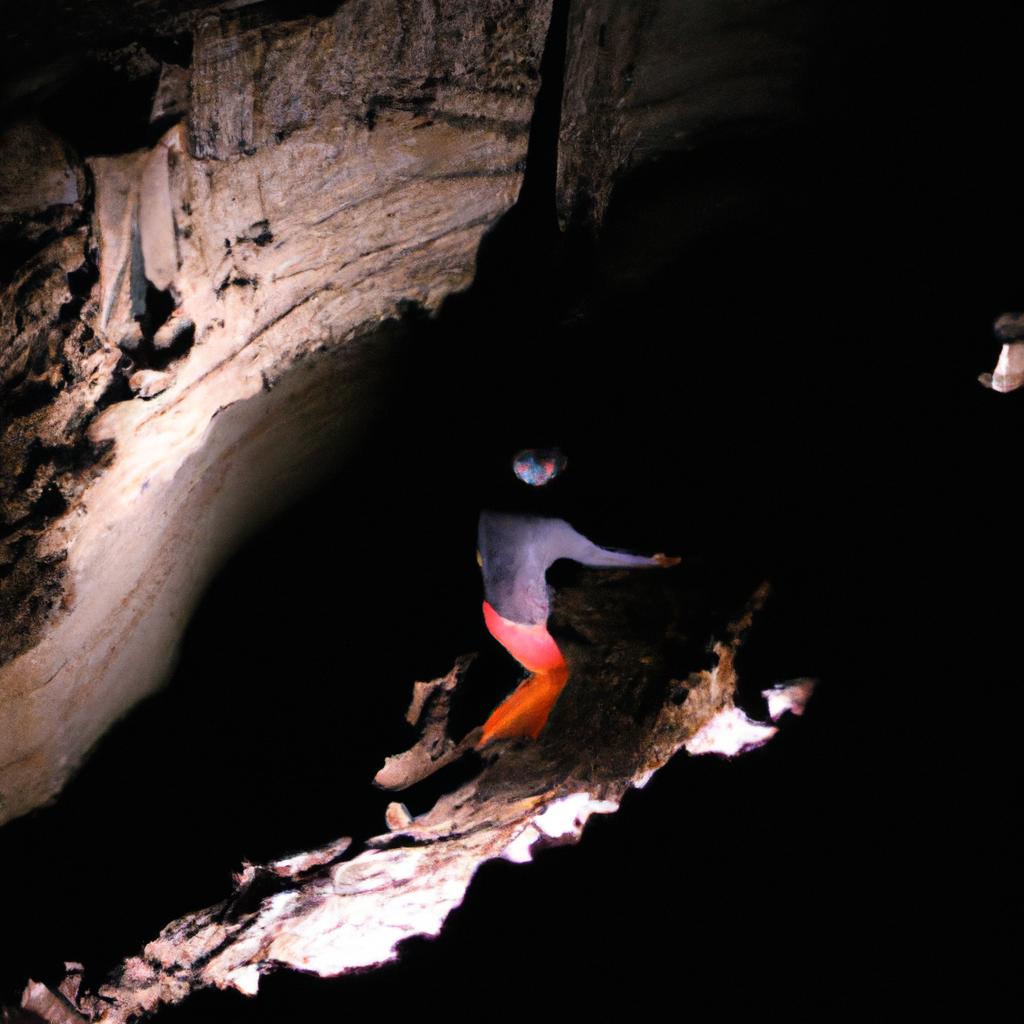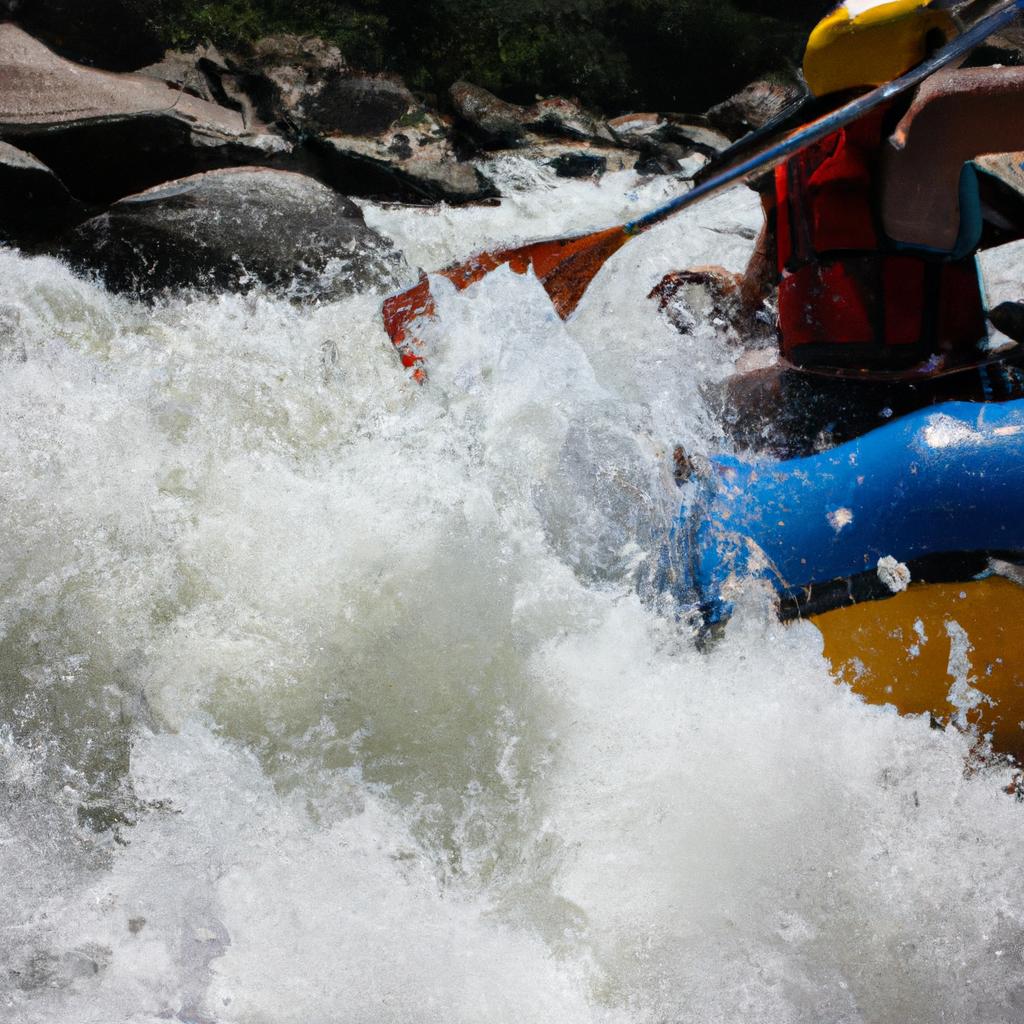Hiking: Discovering adventurous destinations

Hiking has become an increasingly popular activity for adventurers seeking to explore nature’s wonders and challenge their physical limits. Whether traversing rugged mountain ranges or meandering through serene forests, hiking offers a unique opportunity to discover breathtaking destinations that are off the beaten path. For instance, imagine embarking on a trek through the famous Inca Trail in Peru, where ancient ruins and majestic landscapes await at every turn. This article delves into the world of hiking, shedding light on its appeal as well as providing insights into some of the most adventurous destinations that avid hikers can explore.
One of the primary reasons why individuals embark on hiking expeditions is the allure of discovering untouched landscapes and hidden gems. Away from bustling cities and crowded tourist attractions, hiking allows enthusiasts to immerse themselves in remote wilderness areas with awe-inspiring natural beauty. The experience becomes even more enticing when encountering extraordinary sights such as cascading waterfalls nestled deep within dense jungles or witnessing panoramic vistas atop towering peaks. Moreover, hiking presents an excellent opportunity for personal growth and self-reflection amidst tranquil surroundings, away from distractions imposed by modern life.
However, it is essential to note that hiking requires careful planning and consideration due to its inherent challenges and potential risks. From determining suitable gear and equipment based on the terrain and climate, to preparing adequate supplies of food and water, hikers must ensure they are well-prepared before embarking on their journey. Researching the trail beforehand, including its difficulty level and any potential hazards, is crucial for a safe and enjoyable experience.
In terms of gear, hikers should invest in proper footwear that provides stability and protection against rough terrain. Additionally, clothing choices should be appropriate for the weather conditions, with layering options for temperature fluctuations. Other essential items include navigation tools such as maps or GPS devices, first aid kits, emergency shelters, and communication devices like cell phones or satellite phones.
Moreover, it is important to consider one’s physical fitness level when planning a hiking trip. Different trails have varying degrees of difficulty, so it is essential to choose one that aligns with your capabilities. Gradually increasing your endurance through regular exercise and training hikes can help prepare your body for the challenges ahead.
Additionally, safety precautions should never be overlooked. Informing someone about your hiking plans and estimated return time is crucial in case of emergencies. Knowing basic wilderness survival skills such as how to read a map or use a compass can also be invaluable in unexpected situations.
Overall, while hiking offers incredible rewards in terms of exploration and connection with nature, it requires careful preparation and consideration of potential risks. With thorough planning and an understanding of one’s limitations, hikers can embark on unforgettable adventures while ensuring their safety along the way.
Planning your hiking trip
Hiking: Discovering adventurous destinations
Imagine this scenario: you have decided to embark on a thrilling adventure by exploring the great outdoors through hiking. You are eager to discover new and breathtaking landscapes, challenge yourself physically, and experience the serenity that nature offers. However, before embarking on such an expedition, careful planning is essential. This section will guide you through the process of preparing for your hiking trip.
To begin with, it is crucial to select a destination that aligns with your preferences and abilities. Consider factors such as difficulty level, terrain type, weather conditions, and accessibility. For instance, if you prefer moderate hiking trails amidst lush forests and waterfalls, the Appalachian Trail in the United States might be an ideal choice. On the other hand, if you seek more challenging routes with stunning alpine vistas, the Tour du Mont Blanc in Europe could be a suitable option.
Once you have chosen your desired location, make sure to gather information about permits or reservations required for entry into national parks or protected areas. Additionally, check local regulations regarding camping restrictions or fire safety measures to ensure compliance during your journey. These precautionary steps will not only help preserve natural habitats but also contribute to sustainable tourism practices.
To enhance your understanding of what lies ahead during your hike and foster excitement among fellow hikers or travel companions, consider incorporating emotional elements into your preparations. Create a checklist using bullet points that highlight key aspects of the upcoming adventure:
- Immerse yourself in awe-inspiring scenery.
- Connect with like-minded individuals who share a passion for outdoor exploration.
- Challenge personal limits while gaining physical strength.
- Experience moments of tranquility away from bustling city life.
Furthermore, utilize tables to present practical information related to amenities available at various stages along the trail or distances between campsites and water sources. Such visual aids can evoke anticipation and curiosity within potential hikers as they envision themselves immersing in the beauty of nature.
As you conclude this section, it is important to acknowledge that planning your hiking trip sets the stage for a successful and enjoyable experience. With careful consideration of destination, awareness of regulations, emotional engagement, and practical information at hand, you are ready to move on to the next step: understanding essential hiking gear and equipment.
Essential hiking gear and equipment
Section H2: Essential hiking gear and equipment
Once you have planned your hiking trip, it is crucial to ensure that you have the necessary gear and equipment for a safe and enjoyable experience. Having the right gear can make all the difference in challenging terrains and unpredictable weather conditions. To illustrate this point, let’s consider the case of Sarah, an avid hiker who embarked on a journey through rugged mountain trails without appropriate gear. Despite her enthusiasm, she encountered numerous difficulties along the way due to inadequate preparation.
To avoid encountering similar challenges during your own hiking adventure, here are some essential items that should be included in your backpack:
- Sturdy hiking boots: Invest in quality footwear with good ankle support to protect yourself from injuries and provide stability.
- Appropriate clothing layers: Dressing in layers allows you to adapt to changing weather conditions easily. Include moisture-wicking base layers, insulating mid-layers, and waterproof outer shells.
- Navigation tools: Carry a detailed map of the area you will be exploring, as well as a compass or GPS device to help you navigate safely.
- First aid kit: Accidents happen even in the most controlled environments. A basic first aid kit equipped with bandages, antiseptic wipes, pain relievers, and any personal medication is essential.
In addition to these must-have items, it is also helpful to understand how different pieces of gear work together synergistically. The table below provides an overview of how various components interact:
| Gear Component | Function | Importance |
|---|---|---|
| Backpack | Carrying essentials | High |
| Sleeping bag | Providing warmth | Medium |
| Tent | Shelter | High |
| Water purifier | Ensuring clean water | High |
As you prepare for your hike, keep in mind that having the right gear not only enhances safety but also adds to the overall enjoyment of your experience. By ensuring you are well-equipped, you can focus more on the breathtaking landscapes and less on potential obstacles.
In the upcoming section about “Tips for hiking in different terrains,” we will explore how to adapt your hiking techniques based on various types of terrain. Understanding these nuances will allow you to tackle diverse environments with confidence and ease. So let’s continue our journey by delving into some expert tips for conquering different terrains effectively.
Tips for hiking in different terrains
Section H2: Tips for hiking in different terrains
Having covered the essential gear and equipment required for a successful hike, it is now crucial to understand the varying challenges that hikers may encounter depending on the terrain they choose. Whether you are planning an expedition through dense forests or conquering rugged mountain peaks, being prepared and knowledgeable about specific terrains is vital. To illustrate this further, let’s consider the case of Sarah, an experienced hiker who embarked on a week-long trek across diverse landscapes.
Paragraph 1:
Sarah began her journey with a trek through lush rainforests. These verdant environments can be visually captivating but necessitate particular precautions due to their unique characteristics. The dense vegetation can obstruct visibility while navigating narrow paths, making it essential to bring along a machete or a sturdy pair of pruning shears. Additionally, wearing lightweight yet durable clothing will help repel insects and prevent excessive sweating caused by high humidity levels. Sturdy waterproof boots equipped with anti-slip soles should also be worn to tackle muddy trails effectively.
Paragraph 2:
As Sarah ventured deeper into her expedition, she encountered steep mountain slopes that demanded utmost caution and specialized equipment. Hiking poles provided stability on uneven terrain and helped distribute weight more evenly during ascents and descents. It was imperative for Sarah to check weather forecasts before tackling these challenging terrains as sudden changes could pose risks such as avalanches or landslides. A reliable GPS device became indispensable in ensuring she stayed on track while avoiding treacherous cliffs or dangerous drop-offs.
Paragraph 3:
Finally, Sarah reached arid desert regions where extreme temperatures pushed her endurance limits. In such harsh environments, hydration becomes paramount – carrying sufficient water supplies and investing in a quality insulated water bottle proved invaluable companions throughout her journey. Protecting oneself from intense sun exposure was equally important; wide-brimmed hats offered shade while lightweight long-sleeved shirts with UV protection shielded her skin from harmful rays. Sarah also utilized cooling towels soaked in cold water to combat the sweltering heat.
To enhance your hiking experience, consider the following:
- Embrace the serenity of nature and disconnect from digital distractions.
- Immerse yourself in breathtaking landscapes that inspire a sense of wonder.
- Challenge your physical limits and witness personal growth through perseverance.
- Cultivate mental resilience by overcoming obstacles and conquering rugged terrains.
Emotional Table:
| Terrain | Challenges | Precautions |
|---|---|---|
| Rainforests | Poor visibility | Carry pruning shears |
| High humidity | Wear lightweight clothing | |
| Slippery trails | Waterproof boots | |
| Mountains | Steep slopes | Use hiking poles |
| Weather fluctuations | Check forecasts beforehand | |
| Navigation difficulties | Carry a reliable GPS device | |
| Deserts | Extreme temperatures | Stay hydrated |
| Intense sun exposure | Protect against UV rays | |
| Limited water sources | Bring an insulated bottle |
Understanding how different terrains can present unique challenges during hikes is crucial for ensuring safety. By taking appropriate precautions, hikers can fully enjoy their adventures while minimizing potential risks. Now, let’s delve into essential safety precautions for a successful hike.
Safety precautions for a successful hike
Hiking is not just about exploring the great outdoors, but also about discovering unique and adventurous destinations. Whether it’s a hidden waterfall in a dense forest or an ancient ruin nestled on top of a mountain, hiking can take you to places that are off the beaten path. In this section, we will discuss some tips and considerations for finding these exciting destinations.
Imagine you’re planning a hike in the Pacific Northwest region of the United States. One such destination that stands out is Mount Rainier National Park in Washington state. This park offers breathtaking views of glaciers, wildflower meadows, and diverse wildlife. The challenge lies in navigating through its rugged terrains as well as being prepared for unpredictable weather conditions.
To ensure a successful hike to such adventurous destinations, here are some key points to keep in mind:
- Research: Before embarking on your journey, conduct thorough research about the area you plan to visit. Learn about its geography, climate patterns, trails available, and any potential hazards.
- Safety Gear: Always carry essential safety gear like maps, compasses, first aid kits, headlamps, extra food and water supplies, and appropriate clothing layers for changing weather conditions.
- Physical Fitness: Evaluate your physical fitness level before attempting hikes to challenging destinations. Gradually build up stamina by engaging in regular exercise routines and shorter hikes beforehand.
- Leave No Trace: Practice responsible hiking by adhering to “Leave No Trace” principles. Respect nature by leaving natural features undisturbed and disposing of waste properly.
| Destinations | Difficulty | Highlights |
|---|---|---|
| Patagonia | Challenging | Glaciers |
| Himalayas | Extreme | Majestic Peaks |
| Scottish Isles | Moderate | Coastal Scenery |
In summary, hiking opens doors to adventures beyond conventional tourist spots. By conducting proper research, ensuring adequate safety measures, and being physically prepared, you can embark on memorable journeys to exciting destinations.
Transitioning into the subsequent section about “Exploring lesser-known hiking trails,” let us now delve into these hidden gems waiting to be discovered.
Exploring lesser-known hiking trails
As we delve deeper into the world of hiking, it is important to broaden our horizons and venture beyond the well-trodden paths. By exploring lesser-known hiking trails, we open ourselves up to new experiences and discover hidden gems that are often overlooked. In this section, we will discuss the allure of these offbeat destinations and provide insights on how to make the most of your adventure.
Imagine a remote trail nestled within a dense forest, where sunlight peeks through towering trees, casting enchanting shadows on the moss-covered ground. Picture yourself immersing in nature’s tranquility as you traverse untouched landscapes, far away from bustling crowds. These are the kinds of experiences that await those who dare to explore lesser-known hiking trails.
To fully appreciate the beauty and uniqueness of these hidden treasures, here are some tips to enhance your journey:
-
Research extensively: Gather as much information as possible about the trail before setting off. Look for online resources, guidebooks or consult local experts who can provide valuable insights regarding difficulty level, weather conditions, and any potential hazards along the way.
-
Pack essentials wisely: As you embark on an adventure into uncharted territory, ensure your backpack contains all necessary equipment such as maps, compasses, GPS devices or smartphones with offline navigation apps. Don’t forget to pack extra food and water supplies since these secluded routes may not offer convenient rest stops or refill stations.
-
Embrace solitude: Lesser-known trails often attract fewer hikers compared to popular ones. Use this opportunity to connect with nature on a more intimate level by embracing solitude and absorbing the peaceful ambiance surrounding you.
-
Leave no trace: One of the fundamental principles of responsible hiking is leaving minimal impact on the environment. Remember to follow proper waste disposal techniques and avoid disturbing wildlife or damaging vegetation along your path.
| Benefits | Physical Well-being | Mental Well-being |
|---|---|---|
| 1. Increased cardiovascular fitness | 1. Reduced stress and anxiety | |
| 2. Improved muscle strength and endurance | 2. Enhanced mood and self-esteem | |
| 3. Weight management | 3. Boosted cognitive function | |
| 4. Lower risk of chronic diseases | 4. Connection with nature and improved overall well-being |
By embracing lesser-known hiking trails, you not only embark on a unique adventure but also reap the countless benefits that come along with it. In our next section, we will explore how hiking can positively impact your physical and mental well-being, providing further motivation to lace up those boots and hit the trail.
With an understanding of the allure of lesser-known hiking trails, let us now delve into the myriad benefits that hiking offers for both physical and mental well-being.
Benefits of hiking for physical and mental well-being
Exploring lesser-known hiking trails can be an exhilarating experience, as it allows hikers to discover hidden gems off the beaten path. One such example is the Snowy Mountain Trail in Colorado. This trail offers breathtaking views of snow-capped peaks and serene alpine lakes, while providing a challenging yet rewarding hike for outdoor enthusiasts.
There are several reasons why venturing onto lesser-known hiking trails can enhance your adventure. Firstly, these trails often offer a unique sense of solitude and tranquility compared to popular ones. With fewer crowds, you have ample opportunity to immerse yourself in nature’s wonders without distractions. This seclusion allows for a deeper connection with the environment and promotes mindfulness during your journey.
Moreover, exploring lesser-known trails contributes to sustainable tourism by distributing foot traffic across different areas. By diverting attention from overcrowded routes, we can help preserve delicate ecosystems and minimize our impact on natural habitats. It also encourages local communities surrounding these trails, creating economic opportunities that promote conservation efforts and cultural exchanges.
To further illustrate the benefits of discovering new hiking destinations, consider the following emotional responses:
- Awe: Witnessing stunning landscapes untouched by human intervention evokes feelings of awe and wonder.
- Freedom: Breaking away from monotonous routines and immersing oneself in vast wilderness grants a sense of liberation.
- Connection: Engaging with nature fosters a profound bond between individuals and their surroundings.
- Accomplishment: Overcoming challenges along unexplored paths instills a sense of achievement and personal growth.
Table – Emotional Responses:
| Emotion | Description |
|---|---|
| Awe | Feeling overwhelmed by the beauty or grandeur encountered |
| Freedom | Experiencing a sense of liberty or independence |
| Connection | Establishing deep bonds or meaningful relationships |
| Accomplishment | Gaining satisfaction from overcoming obstacles |
In summary, exploring lesser-known hiking trails provides an opportunity for adventure seekers to delve into uncharted territories and experience the tranquility of nature. By venturing off the beaten path, hikers can enjoy solitude while contributing to sustainable tourism practices. The emotional responses evoked by these experiences further enhance the overall enjoyment and personal growth obtained from such explorations. So lace up your hiking boots and set forth on a journey of discovery that will leave you with memories to cherish for a lifetime.






